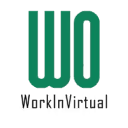In an era marked by volatility and rapid changes, the practice of setting rigid, long-term goals is becoming increasingly outdated. Traditional 5-year plans, which rely on static assumptions about the future, often fall short in an unpredictable world. The economic landscape, technological advancements, and personal circumstances are subject to frequent and sometimes unforeseen shifts, making it challenging to adhere to a fixed trajectory. This recognition has spurred the adoption of flexible goal-setting as a more fitting approach to navigate uncertainty.
Flexible goal-setting embraces the concept of career agility and future planning that can seamlessly adjust to evolving situations. Whereas static plans can create barriers to adaptation, a flexible framework allows both businesses and individuals to remain responsive to changing conditions, thereby fostering resilience and reducing stress. This methodology is inherently proactive, equipping individuals and organizations with the capacity to pivot as circumstances demand.
One of the key benefits of adaptable career goals lies in their ability to enhance creativity. By not being bound to a rigid path, individuals can explore diverse opportunities that may emerge, thereby fostering innovation and proactive problem-solving. This approach not only mitigates stress by avoiding the pressure of sticking to an outdated plan but also inculcates a mindset geared towards resilience and long-term success.
In this context, career agility becomes synonymous with sustainable professional growth. With an emphasis on continuous learning and responsiveness, adaptable career goals enable professionals to keep pace with technological innovations and shifting market dynamics. Flexible goal-setting ensures that businesses, too, remain competitive and forward-thinking, thus positioning themselves favorably in an ever-evolving economy.
Ultimately, the shift from rigid planning to a more dynamic approach empowers both individuals and organizations to better manage unforeseen challenges. By embracing flexible goal-setting, we can cultivate a proactive outlook, ensuring resilience and adaptability in a world where certainty is a luxury. Such an outlook not only enhances short-term coping mechanisms but also fosters long-term success and satisfaction.
Key Principles of Flexible Goal-Setting
Flexible goal-setting is grounded in a set of core principles that enable professionals to navigate unpredictable environments with confidence. One foundational principle is the emphasis on short-term, actionable goals that provide a clear direction while allowing for adaptability. Unlike rigid, long-term planning, these goals can be swiftly adjusted in response to changing circumstances and new information. By focusing on proximate objectives, individuals and teams can maintain momentum and make continuous progress even amid uncertainty.
Periodic review and reflection constitute another essential element in flexible goal-setting. Regularly assessing progress allows individuals to recalibrate their goals to align with both the long-term vision and the present situation. This reflective practice ensures that efforts remain relevant and directed towards the evolving landscape. Techniques such as setting quarterly goals or conducting monthly check-ins are practical methods for maintaining this cycle of review and adjustment.
Aligning goals with both long-term aspirations and current realities requires a delicate balance. It is imperative to maintain a vision for the future while being grounded in the present. One effective strategy to achieve this dual focus is through frameworks like Objectives and Key Results (OKRs). OKRs split overarching objectives into specific, measurable outcomes, ensuring that each step taken is firmly tethered to a larger purpose while adaptable to immediate needs.
Agile project management also exemplifies a flexible approach by prioritizing adaptability and iterative progress. In Agile frameworks, projects are broken down into manageable units called sprints, allowing for continuous evaluation and pivoting as necessary. This method underlines the importance of responsiveness and the ability to pivot without losing sight of the overall goal.
By integrating these principles—setting short-term, actionable goals, conducting periodic reviews, and balancing long-term vision with current realities—professionals can develop adaptable career goals. This approach provides the career agility needed to thrive in uncertain times and lays a robust foundation for future planning.
Tools and Techniques for Effective Implementation
Adopting adaptable career goals within an organization or on an individual level necessitates the use of effective tools and methodologies. Digital tools like productivity apps, such as Todoist and Trello, along with project management software like Asana or Monday.com, serve as foundational platforms for managing ongoing tasks and aligning them with overall objectives. These tools offer cloud-based collaboration features that enhance flexibility and ensure team members have real-time access to updates, fostering transparency.
For workflow management, methodologies such as Scrum and Kanban are highly effective. Scrum enables teams to prioritize tasks through sprints, ensuring deliverables are manageable and adaptable to change. Kanban focuses on visualizing workflows through boards and cards, making it easier to identify bottlenecks and adapt plans accordingly. These methodologies are paramount in maintaining career agility by allowing rapid adjustments based on feedback and evolving circumstances.
Adequate use of regular check-ins and feedback loops solidifies the foundation for flexible goal-setting. Regular check-ins—whether monthly, quarterly, or at other intervals—provide a structured time for revisiting goals and making necessary adjustments. Feedback loops allow team members to share insights, celebrate achievements, and discuss obstacles openly. Adaptive leadership, which emphasizes agility, responsiveness, and supporting team members through uncertainty, is crucial. Leaders who adopt this style can inspire their teams to remain flexible and proactive in their career planning.
Practical tips for integrating flexibility into existing goal-setting processes include setting short-term milestones that align with long-term goals. This strategy allows for periodic reassessment and adaptation. Additionally, employing SMART (Specific, Measurable, Achievable, Relevant, Time-bound) criteria in a way that accommodates changes will ensure that goals remain both rigorous and flexible. Encouraging an open culture, where team members feel comfortable suggesting modifications and proposing new ideas, further supports adaptable career goals.
Case Studies and Real-World Applications
To illustrate the practical benefits of flexible goal-setting, we will examine several case studies from diverse fields. These examples demonstrate how adaptable career goals and career agility can positively impact various aspects of personal and professional life.
Business: Tech Start-Up Growth
A tech start-up faced challenges with rapid market changes and technological advancements. Initially, they had a rigid five-year plan that quickly became obsolete due to industry disruptions. By shifting to a flexible goal-setting approach, the company implemented quarterly reviews to assess progress and realign objectives. This adaptability allowed them to pivot quickly in response to market needs, resulting in a 50% increase in market share within two years. The key lesson here is that career agility enables organizations to stay competitive through constant adaptation.
Technology: Software Development Team
A software development team in an established firm struggled with project delays and rapidly changing requirements from clients. Through adopting an agile methodology and flexible goal-setting, they experienced improved project management and client satisfaction. By breaking down objectives into smaller, more manageable tasks and regularly revisiting goals, the team could adapt to new requirements efficiently. This approach led to a 30% reduction in project completion time and a notable increase in client retention. The takeaway is that flexibility in goal-setting fosters a proactive approach to future planning in dynamic environments.
Education: University Curriculum Development
A university faced the challenge of keeping its curriculum relevant amid rapid technological advancements and evolving job market demands. Instead of sticking to rigid, decade-long plans, the institution embraced a flexible goal-setting strategy. They introduced an adaptive review process, updating courses based on annual industry feedback and technological trends. This approach not only kept the curriculum current but also increased student enrollment by 40% over five years. This case illustrates that flexible goals in education can ensure the long-term relevance and success of academic programs.
Personal Development: Career Change
An individual sought to transition from a corporate career to entrepreneurship but faced uncertainty about the right timing and strategy. By employing an adaptable goal-setting framework, they set short-term goals with regular reassessments, allowing for gradual skill development and market exploration. This iterative process led to the successful launch of a profitable business within three years. The primary lesson here is that flexible goal-setting can facilitate smooth and effective career transitions, reducing the risks and uncertainties involved.
Overall, these case studies underscore the importance of adaptable career goals and career agility across various domains. They demonstrate that a flexible approach to goal-setting not only addresses challenges but also leverages opportunities, leading to positive outcomes in both professional and personal contexts.



